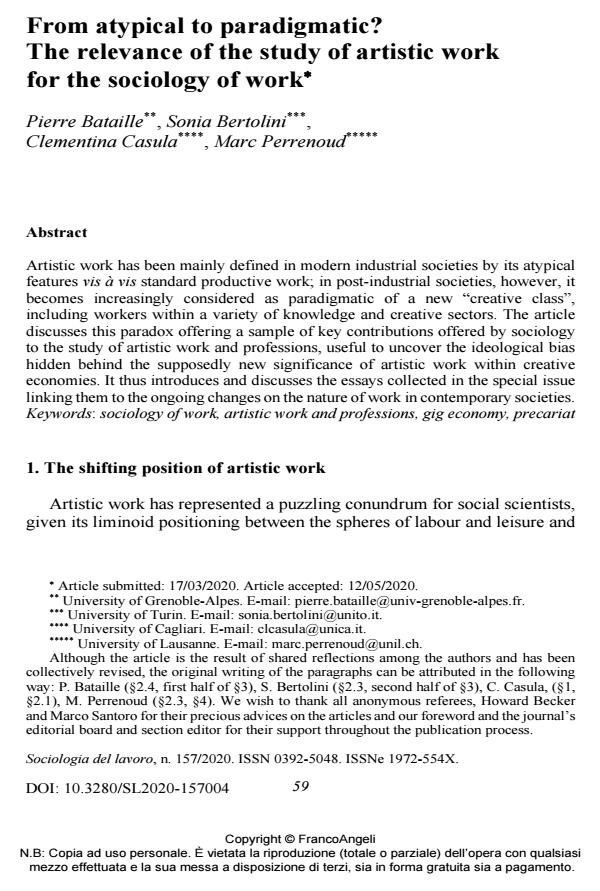From atypical to paradigmatic? The relevance of the study of artistic work for the sociology of work
Journal title SOCIOLOGIA DEL LAVORO
Author/s Pierre Bataille, Sonia Bertolini, Clementina Casula, Marc Perrenoud
Publishing Year 2020 Issue 2020/157
Language English Pages 25 P. 59-83 File size 311 KB
DOI 10.3280/SL2020-157004
DOI is like a bar code for intellectual property: to have more infomation
click here
Below, you can see the article first page
If you want to buy this article in PDF format, you can do it, following the instructions to buy download credits

FrancoAngeli is member of Publishers International Linking Association, Inc (PILA), a not-for-profit association which run the CrossRef service enabling links to and from online scholarly content.
Artistic work has been mainly defined in modern industrial societies by its atypical features vis à vis standard productive work; in post-industrial societies, however, it becomes increasingly considered as paradigmatic of a new "creative class", including workers within a variety of knowledge and creative sectors. The article discusses this paradox offering a sample of key contributions offered by sociology to the study of artistic work and professions, useful to uncover the ideological bias hidden behind the supposedly new significance of artistic work within creative economies. It thus introduces and discusses the essays collected in the special issue linking them to the ongoing changes on the nature of work in contemporary societies.
Keywords: Sociology of work, artistic work and professions, gig economy, precariat
- Bringing labour market flexibilization under control? Marginal work and collective regulation in the creative industries in the Netherlands Wike Been, Maarten Keune, in European Journal of Industrial Relations /2024 pp.403
DOI: 10.1177/09596801221127109 - Turning post-materialism on its head: self-expression, autonomy and precarity at work in the creative industries Petar Marčeta, Wike Been, Maarten Keune, in Cultural Trends /2024 pp.600
DOI: 10.1080/09548963.2023.2241414 - Withstanding Vulnerability throughout Adult Life Marc Perrenoud, Pierre Bataille, Guy Elcheroth, pp.337 (ISBN:978-981-19-4566-3)
Pierre Bataille, Sonia Bertolini, Clementina Casula, Marc Perrenoud, From atypical to paradigmatic? The relevance of the study of artistic work for the sociology of work in "SOCIOLOGIA DEL LAVORO " 157/2020, pp 59-83, DOI: 10.3280/SL2020-157004